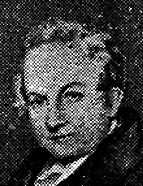

The second series of historiographical texts published in The Monthly Mirror , titled "Memoranda Lusitanica", presents quite different traits from the previous series. This collection represents an original work by Adamson and clearly bears the hallmarks of his authorship, evident in its exhaustive and rigorous approach, as well as the attention he pays to grounding his interpretation of events in a wide range of diverse sources. In "Memoranda Lusitanica", the philosophical and occasionally speculative tone of the "History of Portugal" series is replaced by a more austere, nearly academic style. In "Memoranda Lusitanica", the lusophile narrates the history of the House of Bragança, tracing its origins up to the ascension of King John IV to the Portuguese throne and the events surrounding the Restoration War. The significance of this collection of dissemination texts, aimed at honouring the Portuguese royal family, who was then exiled in Brazil, primarily lies in the precision and accuracy of the facts presented, which are thoroughly supported by a wide range of bibliographical sources from the author's library. Equally intriguing is the author's inclusion of occasional digressions within this historical narrative, referencing notable figures from the House of Bragança ( e.g. D. Beatriz, sister of D. Afonso, the 1st Duke of Bragança) due to their significance in the context of Portuguese-British relations, or references to legendary Portuguese figures such as Inês de Castro and King Sebastião.
A review of his major works and a quick reading of a series of articles published in periodicals, uncovers a little-known aspect of Adamson's work: his perspective on Portuguese history, which closely aligns with his appreciation for the development of Portuguese literature and culture. The data presented allows us to state that his work was one of the most extensive and ambitious Portuguese studies project ever devised by a Romantic-era lusophile. The completion of the original Lusitania Illustrata would have transformed it into a groundbreaking work, the study of which would be crucial for understanding Portuguese literature and history. In this context, Adamson would undoubtedly have fulfilled the expectations of a small yet specialised audience that closely monitored his literary career and valued the quality and rigour of his work in Great Britain, Portugal, and other European countries. Notably, he was a full, corresponding, or honorary member of numerous societies, which highlights his recognition in these circles: Society of Antiquaries of London; Royal Society of Literature; Royal Academy of Sciences of Lisbon; Spanish Academy of Archaeology, etc.. However, various challenges prevented him from achieving his ambitious project: his declining health, the inability to rebuild his library, and the lack inability of his son, Edward-Hussey Adamson, to carry on his Lusophile endeavours, coupled with his deep longing for Portugal — his chosen second homeland, to which he would never return — would lead to his untimely death in 1855.
This work is financed by national funds through FCT - Foundation for Science and Technology, I.P, in the scope of the projects UIDB/04311/2020 and UIDP/04311/2020.
